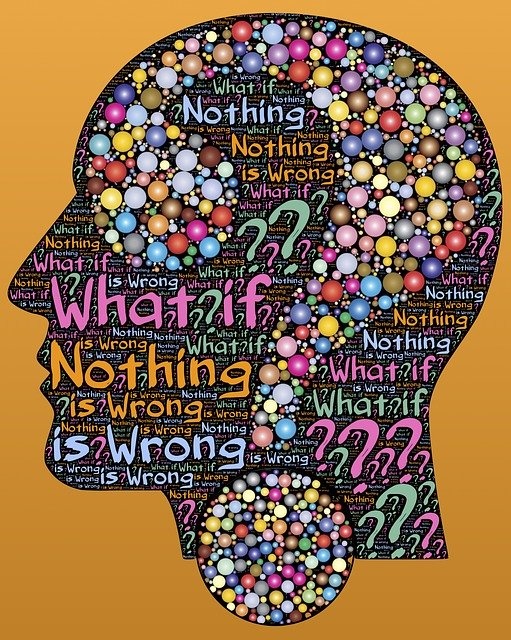How endocannabinoids mediate anxiety
Your heart bounding as you sit to take an exam. The beads of sweat trickling down your face as you wait at a traffic light while late on your way to work. Your sweaty palms wrapping around a bat as you step up to the plate during the last inning of a tied game.
Anxiety: it’s at the core of the ancient fight-or-flight response, readying your body to duke it out or run like mad at the sight of danger. And while humans, of course, still encounter these types of survival situations, many of us (especially those who sit behind a computer most of the day) experience anxiety and stress daily from non-life-threatening situations. But our body doesn’t know the difference between the two and reacts the same whether we have just spotted a black bear a few feet away or if we have a big presentation due.
The world we live in is practically built on stress—and the current pandemic is certainly not helping. Therefore, our body’s natural instinct to protect us ends up doing more harm than good, as nearly 40 million people in the US experience some type of anxiety disorder. These conditions wreak havoc on our bodies and minds and significantly impact quality of life.
Several pharmaceutical medications are available to ease anxiety, but they often come with sedating effects and can be habit forming. In fact, healthcare professionals have predicted that the overprescribing and overuse of benzodiazepines could represent an epidemic similar to the opioid crisis.
As such, people have begun to turn to cannabinoids, especially cannabidiol (CBD), as a safer way to manage anxiety without the side effects. Studies have suggested that CBD may make people feel calm at any dose, whereas delta-9-tetrahydrocannabinol (THC) may make more people feel calm at low doses and anxious at high doses. [1] Every person reacts differently to cannabis, but it is certainly of interest to explore further why CBD might be an effective anxiolytic compound.
A 2020 study took a closer look at a specific neural system that contributes to anxiety in a pre-clinical model. [2] Researchers started by mapping a pathway between the “fear” (the amygdala) and the “decision-making” (the prefrontal cortex) centers of the brain. They found that activating this circuit produced anxious behaviors and that stress exposure increased the strength of the connection between the two regions.
Researchers then evaluated the effects of anandamide and 2-arachidonoylglycerol (2-AG) on this circuit, as previous studies have shown that these endocannabinoids regulate activity in the prefrontal cortex. They found that 2-AG blocks stress activation by inhibiting the signals sent by the amygdala to the prefrontal cortex. The observed mechanism of action related to reducing glutamatergic transmission. Acute stress impairs 2-AG and cannabinoid 1 (CB1) receptor signaling, which coincides with increased glutamatergic transmission in these brain regions alongside anxious behavior. Together, these results show that 2-AG can normally help prevent anxious behavior but may become impaired after stress exposure, thus leading to the development of mental health conditions over time. [2]
While this is an elegant study on circuitry, how do these results explain why CBD can be effective for anxiety?
2-AG is an agonist at CB1 and cannabinoid 2 (CB2) receptors, which means it increases their activity. Unlike anandamide, which binds preferentially to CB1, 2-AG binds to both types; thus, the mechanism of action of 2-AG is more like CBD than THC. [3] This physiological reason could explain why these compounds could have the same effect on anxiety.
But nothing’s ever quite so simple in cannabis science, so we can’t entirely contribute this effect to 2-AG or CBD alone. It’s a complex system that requires far more research.
However, this important study sheds light on why and how cannabinoids interact with specific neural circuits that mediate stress and anxiety, further opening the door to clinical trials that would more deeply explore the potential of these compounds to treat mental health conditions.
Image Source: Image by John Hain from Pixabay
References
- Stoner, S.A. “Effects of Marijuana on Mental Health: Anxiety Disorders.” Alcohol & Drug Abuse Institute, University of Washington, June 2017, http://adai.uw.edu/pubs/pdf/2017mjanxiety.pdf. (impact factor: NA; cited by: NA)
- Marcus, D.J., et al. “Endocannabinoid Signaling Collapse Mediates Stress-Induced Amygdalo-Cortical Strengthening.” Neuron, vol. 105, no. 6, 2020, pg. 1062-1076. (impact factor: 14.403; cited by: 3)
- Di Marzo, V., & De Petrocellis, L. “Why Do Cannabinoid Receptors Have More Than One Endogenous Ligand?” Philosophical Transactions of the Royal Society of London. Series B, Biological Sciences, 367, no. 1607, 2012, pg. 3216-3228. (impact factor: 6.139; cited by: 170)








